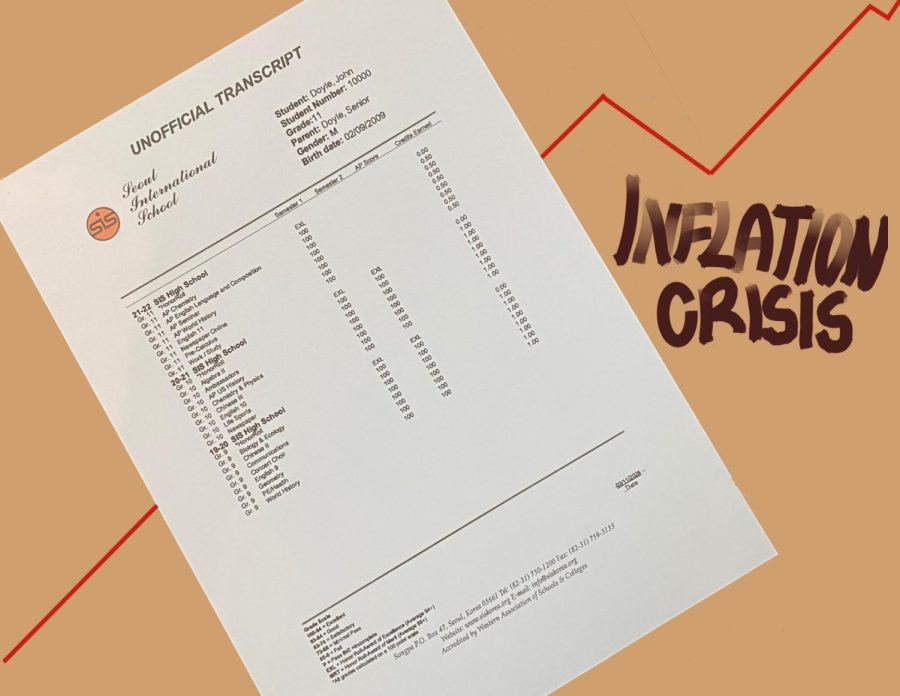Changing the feedback culture, Part 3: Inflated grades, inflated expectations
Apr 15, 2022
Straight As no longer hold much meaning within our school. When most students’ grade point averages (GPA) typically reside in the mid to high 90s, the distinction is not as special as it once was. Back in 2007, when our school’s letter grade GPA system changed to a percentage-based one, the honor rolls bestowed to those with a GPA above 95 were reserved for select, exemplary grade earners. But times have changed.
In our current hyper-inflated grading system, many students’ GPAs are only differentiated by a few decimal points. Higher average scores are pushing students to become sensitive about minuscule grade differences. A combative feedback culture results, where teachers face students who need to salvage another summative point.
The problem with inflated grades begins with how they produce higher expectations among students. When most students have GPAs in the upper 90s, to stay competitive, students are pressured to match such high performances.
As their expectations grow higher, that one-point deduction begins to unnerve them. Not only does students’ mental health suffer, but many also opt to complain about their scores to teachers. And that is where the toxic feedback culture—repeatedly discussed in this series—takes shape.
Even though the difference in the mastery of content between a student who received a 100 and one who got a 97 is marginal at best, the current inflated grading system places value on students’ abilities to avoid silly errors. This environment breeds perfectionists who cling to their small mistakes as those small marks are what differentiate students from each other.
What is especially concerning, though, is that grade inflation is only getting worse. According to Kelcey Edwards, Director of Guidance and College Counseling, approximately 80 percent of the Class of 2023 has GPAs over 95. At large, the GPA bell curve for the Junior Class is heavily left-skewed—meaning everyone’s grade is very high but also very clustered.
As grade inflation continues, the school could consider implementing deflationary grading policies. Considering the high school administration leadership changes and the introduction of new staff members that will ensue in the coming school year, the time for these reforms is now.
Via effective communication between the administration and all staff members, new standards for the ideal range of class average scores should be set. Reestablishing what a “100” entails about a student’s performance can help further streamline the grading system. The main differentiator of scores, in general, ought to be placed on students’ deficiency in core knowledge or skill rather than on their minor mistakes.
The main culprits of the inflationary grading system, retesting and grading curves, should be revisited as well. Lowering retest scores to either an 80 or 75 percent will still grant students another opportunity to relearn while contributing to the deflationary effort. For courses with grading curves, reevaluating the impact of the curve on median scores can be another helpful measure.
Devoting these resources to overhaul the current grading system, however, appears contradictory when students are increasingly told that transcript differences do not amount to much in the college admissions process. The caveat is that transcripts matter, but only when the differences between students are statistically significant.
In the status quo, students’ transcripts with grades mostly in the upper 90s and multiple AP courses are strikingly difficult to tell apart. Students thereby attempt artificially to give themselves a leg up within a system designed not to illustrate a variance in performance.
By deflating students’ grades to better resemble a bell-shaped curve, transcript grades will naturally showcase varying levels of students’ hard work and abilities. Transcripts should matter, for students spend the majority of their school lives preparing and performing in classes. Yet the grading system will spur grade differentiation without students having to do so themselves.
Rather counterintuitively, reducing the burden to manufacture minor differences in transcript grades can help students realize that the soft elements within school life—participation, leadership, and relationship building—matter more for both college admissions and success at large.
It is important to keep in mind the power of demand characteristics—the tendency of individuals to behave in a way that is demanded of them. Students simply dance to the tune of the system that governs them and look to maximize their chances of success within the given environment. A piece of the puzzle lies in the administration’s hands to help lead students down a path that ensures fair and sound competition: that piece is grade deflation.







